Mirabel, Canada lost one a cherished community member this past month, Daniel “Burn” Brunet. Brunet was known as an avid Klein Tools fan, and the company was shocked to hear of his unfortunate passing. Since its creation, Brunet ran the Klein Tools Fan Facebook page, Klein Tools Collectors. This page was created to give fans Read more
ShopTalk

Mirabel, Canada lost one a cherished community member this past month, Daniel “Burn” Brunet. Brunet was known as an avid Klein Tools fan, and the company was shocked to hear of his unfortunate passing. Since its creation, Brunet ran the Klein Tools Fan Facebook page, Klein Tools Collectors. This page was created to give fans a space to talk about new products, clever hacks and more.
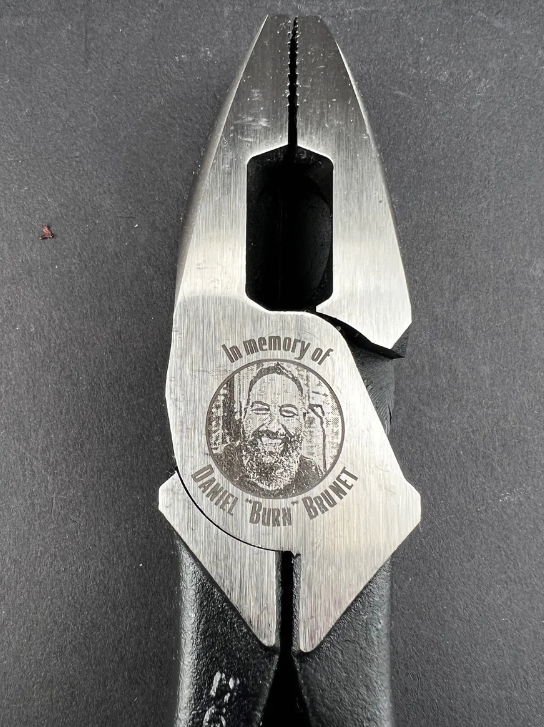
It was not a question to the 165-year-old family-owned company out of Chicago suburb Lincolnshire, Klein Tools wanted to create something that will help Burn’s memory live throughout the brand and provide support for his family. The idea of the honorary Daniel Brunet pliers was turned around and raffled off to fans within a week. These pliers raised over $10,000 for the Brunet family.
“Our fans go above any beyond consistently for us, and Burn was often at the forefront. It was only right to do something to recognize how important he was to the Klein Tools family,” said Greg Palese, Vice President of Marketing at Klein Tools.
To purchase the honorary Daniel “Burn” Brunet pliers, please visit here.
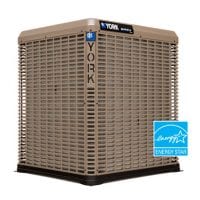
As professionals within the space, it’s our responsibility to inform and educate residential property owners in choosing an energy-efficient HVAC for their homes. By providing additional knowledge and assistance, professional mechanics can also separate themselves within the space. Whether you are an aspiring mechanic or an experienced professional in the field, quality customer service and Read more
As professionals within the space, it’s our responsibility to inform and educate residential property owners in choosing an energy-efficient HVAC for their homes. By providing additional knowledge and assistance, professional mechanics can also separate themselves within the space.
Whether you are an aspiring mechanic or an experienced professional in the field, quality customer service and educating consumers can provide a variety of benefits. To help homeowners understand which HVAC is best for their homes, share insight into which energy-efficient system would be a good fit. Not only are you educating these customers, but by developing positive relationships, you can earn strong word-of-mouth connections.
Use this information to assist homeowners when trying to find the most energy efficient HVAC systems for their home.

What is an Energy-Efficient HVAC System?
Naturally, HVAC systems come in a variety of different sizes, types, commercial and residential alike. As technology advances, new systems start to separate themselves from their traditional counterparts. In the mechanic community, we are constantly battling how to navigate these changes while still helping consumers save energy and money in their residential properties.
According to energy.gov, heating and cooling accounts for about half of a typical home’s energy usage. Thus, high performance HVAC systems are essential in managing energy consumption and associated costs for individual homeowners. Although some might not seem as powerful, they can ensure a sufficient job with energy usage in mind. When explaining HVACs to consumers, be sure to clearly define and differentiate what an energy efficient HVAC is and how these systems would work in their homes.
How to Differentiate Between Energy Efficiency Measurements?
Based on their functionality, there are distinct measurements of efficiency performance based on different HVAC systems. Primarily, reviewing the efficiency measurements are what makes the difference between these units. Their purpose varies and so do their energy consumption measurements. One of the most common of these statistics include, AFUE (Annual Fuel Utilization Efficiency), HSPF (total heat output), and SEER (Seasonal Energy Efficiency Ratio).
When investing in the right system, it’s critical to identify these high efficiency measurements. For example, when buying a new appliance or system, checking for energy data along with what makes a product ENERGY STAR certified will help define the energy saving capabilities of that machine. The ENERGY STAR certification plays a major role in determining the power saving opportunities of a given system. Carefully choose the devices with the highest percentage of either AFUE, HSPF, and SEER.
How to Help Them Decide Which System is Best for their Property?
In order to help a homeowner decide which systems are best for their property, they need to understand their options. They also should consider their home’s age, layout, geo-location, weather, and temperature patterns. These elements will directly impact which machines will be the best fit to make their home as comfortable as possible.
The most common and effective devices for heating a residential property are furnaces with high percentages of AFUE and energy efficient heat pumps. For summertime, the most ideal cooling system combination would be either using a heat pump or air conditioners. Take into consideration the amount of heat a home is exposed to along with the amount of cold a property can experience on a yearly basis.
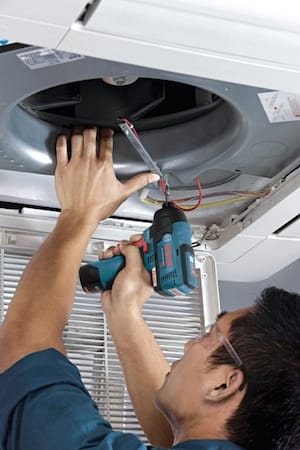 Ideal Types of Efficient HVAC Systems
Ideal Types of Efficient HVAC Systems
Furnace
For a furnace in particular, the efficiency measurements are in terms of AFUE (Annual Fuel Utilization Efficiency). We will want to install a furnace for homeowners with high measurements of AFUE. For example, if they purchase a furnace with an AFUE of 90% meaning that 90% of the energy you are investing in is being used to heat your property. This has become the most preferred method of heating a residential property, these devices can run on gas, oil, electricity, and they can vary in energy efficiency.
Geothermal Heat Pump & Air-Source Heat Pump
Other efficient systems to install include a geothermal heat pump and an air-source heat pump. Both provide an improved energy saving method of heating and cooling necessary for a home. In heating mode, the energy will be measured by HSPF, which means the (total heat output). Because it both warms and cools, in cooling mode, you will want to be mindful of the SEER (Seasonal Energy Efficiency Ratio) rating — the higher the better but ideally over at least 20.
A geothermal heat pump is a stable but expensive way to heat and cool your property, the system itself uses the earth as a source of heat. On the other hand, an air-source heat pump ventilates air in and out of your home. When in heating mode, this specific system uses refrigerant cool air and moves heat in from the outside, which is not exactly ideal for colder climates.
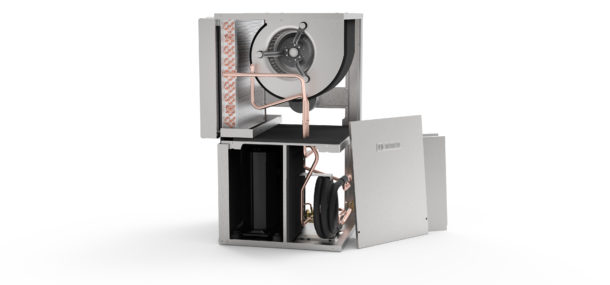
Air Conditioners
In comparison to the other home comfort systems, as you know, an air conditioner plays a significant role in cooling a home in hot temperatures. In warmer climates, this is an essential unit to install when reviewing a residential property’s interior comfortability. Typically, air conditioners are matched with a corresponding furnace to heat a home in the colder months. These appliances use SEER to measure energy competency, so as you search, consider investing in a higher SEER rating.
How to Ensure HVAC System Longevity?
After homeowners decide which machines are best for their property, remind them the importance of your services, the installation process, and preventative protection along with any maintenance tips. When installing these systems, be transparent with the residents; your knowledge will help them get a better understanding of how to treat these devices. Doing so will also establish a sense of security and trust with your consumers.
Some maintenance tips that you should share with your customer include, how to clean system filters, clean around the machine itself, prevent obstruction, and inspect their air ducts. The health hazards of dirty furnace filters is something that every homeowner should be able to avoid if they are instructed on how to do so. Seasonally, every homeowner should also revisit their HVAC appliances to check for cleanliness, effectiveness, and/or proof of proper installation.
In order to ensure longevity and effectiveness, remind them of their protection options as well. One option could be getting warranties on each appliance individually, which could get expensive, or investing in a single home warranty policy. Both options can provide an umbrella of protection against natural wear and tear for every system, while making it easier to access job opportunities. Sharing additional options with your consumers not only educates them, but shows that you are committed to protecting their investment as well.
Final Thoughts to Consider
Each year in the U.S., three million heating and cooling systems are replaced and large amounts of money are used for repairs. We can continue to try to find new ways to make saving energy easier than ever before.
Visit your partners at Mechanical Hub for products, news, industry insight, and featured articles to learn more about what is happening in the industry right now.
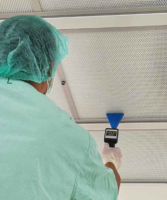
A building’s design, construction, setup, and operations are all based upon the initial intended use of the facility and current building codes. The building’s ventilation system is designed to achieve acceptable IAQ levels based upon “normal” operating conditions. However, no matter the design, the ventilation system’s initial setup and operation have limitations. Heating Ventilation and Read more
A building’s design, construction, setup, and operations are all based upon the initial intended use of the facility and current building codes. The building’s ventilation system is designed to achieve acceptable IAQ levels based upon “normal” operating conditions. However, no matter the design, the ventilation system’s initial setup and operation have limitations. Heating Ventilation and Air Conditioning (HVAC) systems are complex mechanical systems subject to degradation over time. Buildings are dynamic spaces. Occupancy, building use, operational expectations, and building codes change and evolve. Recent world events related to the pandemic and climate change are dramatically redefining “normal” operating conditions.
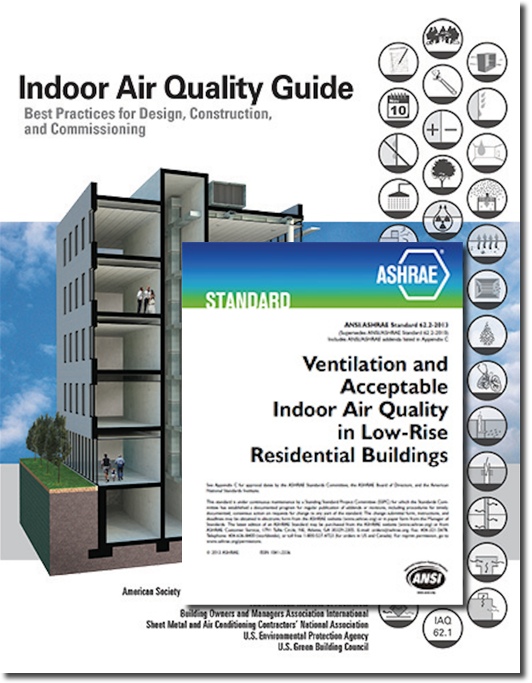 The volume of outdoor air introduced into a building is essential to achieving acceptable indoor air quality through diluting airborne pollutants (including aerosolized viruses like SARS-CoV-2), maintaining adequate building pressures, and controlling temperature and humidity levels.
The volume of outdoor air introduced into a building is essential to achieving acceptable indoor air quality through diluting airborne pollutants (including aerosolized viruses like SARS-CoV-2), maintaining adequate building pressures, and controlling temperature and humidity levels.
The continuous and accurate measurement of air volume matters. When a ventilation system fails to provide proper ventilation, the effects are not immediately known. Unless the outdoor airflow rate is actively measured, determining under-ventilation or over-ventilation may only come after a preventable outcome.
- Under-ventilation can negatively impact occupant comfort, health, and safety. Headaches, fatigue, upper respiratory irritations are examples of delayed indications of under-ventilation. When a large population of occupants experiences these conditions, it is historically referred to as Sick Building Syndrome. The potential for transmission of aerosolized viruses, like SARS-CoV-2, raises the importance of measuring air volumes and having real-time data to verify environmental conditions and indoor air quality.
- Over-ventilation can negatively impact building operations and operational expenses. Each cubic foot per meter (CFM) of outdoor air introduced into a building must be treated (cooling, heating, filtering) to achieve the desired environmental conditions inside a building. Increasing the volume of outdoor air increases the workload and operational stresses on the HVAC system. Increases in capacity and equipment runtimes directly increase the consumption of energy and associated energy costs.
The volume of ions in indoor air matters because ions contribute to cleaning air. Some of the cleanest outdoor air is near cascading water, such as the shorelines of rivers, oceans, and waterfalls. The energy generated from the crashing waves and plunging water fills the air with ions. These ions act as naturally scrubbing agents and clean the nearby air.
When measured, ion levels in these locations typically range from 1,000 to 3,000 ions per cubic centimeter (ions/cc). EPA studies of human exposure to air pollutants indicate that indoor pollutant levels can be 2 to 5 times higher than outdoor levels. And, when measured, the volume of ions in indoor air typically only averages in the hundreds of ions/cc.
HVAC systems that incorporate advanced indoor air quality technologies that focus on measuring and cleaning indoor air offer the greatest benefit to building occupants and greatest ROI for building owners.
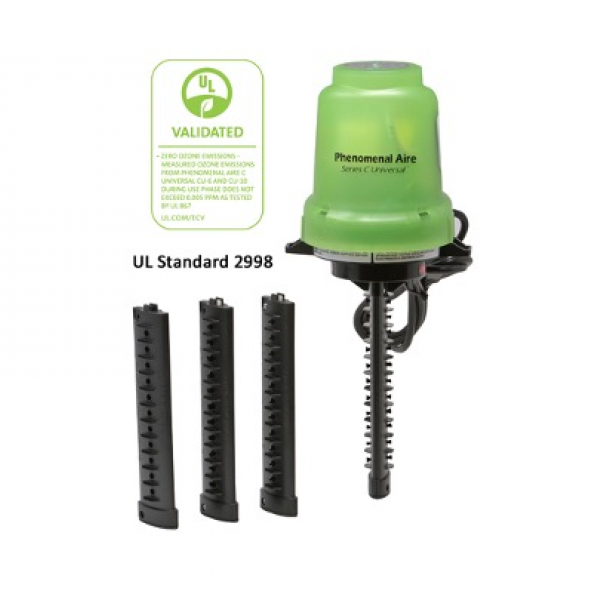
Phenomenal Aire™ advanced IAQ technology utilizes needlepoint bipolar ionization technology to generate ions and clean indoor air. Phenomenal Aire’s superior design maximizes ion production. Higher volumes of ions released into an HVAC airstream increases agglomeration activity and the efficacy of the air cleaning process. Higher production volumes also offer a greater number of ions to travel from the HVAC system into the occupied space, where they contribute to raising indoor air ion levels closer to those found in clean outdoor air settings.
Third party studies have shown that ions generated by needlepoint bipolar ionization can have an anti-microbial effect on certain viruses, like SARS-CoV-2, which ultimately leaves the virus inactive.
For more information on Phenomenal Aire, visit www.phenomenalaire.com.
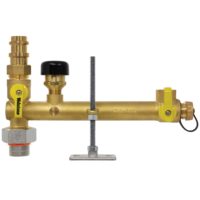
The patent-pending Dielectric Water Heater Supply Valve™ (DWHSV) simplifies the installation and service of any water heater. It combines a dielectric union, a ball valve, and a ½” FIP port into a single forged dezincification-resistant brass body. This valve easily joins the water heater and distribution piping, isolates the unit for service, and offers integrated Read more
The patent-pending Dielectric Water Heater Supply Valve™ (DWHSV) simplifies the installation and service of any water heater. It combines a dielectric union, a ball valve, and a ½” FIP port into a single forged dezincification-resistant brass body. This valve easily joins the water heater and distribution piping, isolates the unit for service, and offers integrated ports for the installation of a vacuum breaker and temperature gauge if so desired. It features ¾” FIP dielectric union ends for connection to the water heater, with a choice of FIP, MIP, sweat, press, or push ends to connect to system piping.
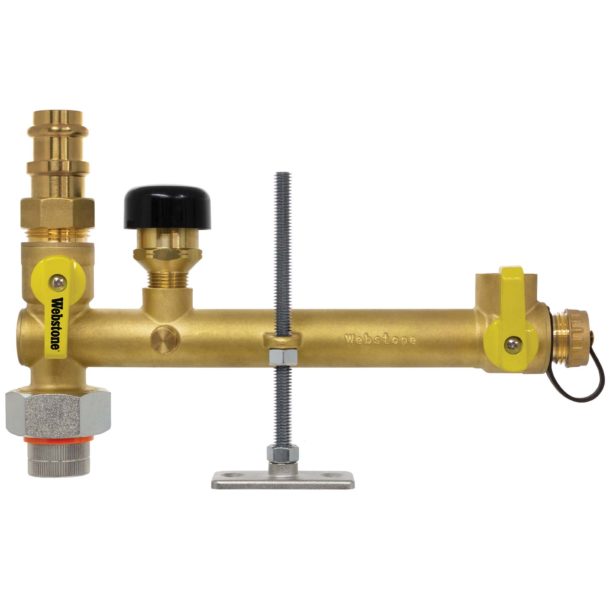
For those areas where an expansion tank is also required, the DWHSV with Expansion Tank Service (DWHSV-X) is a fully integrated solution. Designed for the most complete water heater installation, the DWHSV-X features an extended arm with a ¾” FIP port and ¾” capped hose drain for the simplified installation and future service of the expansion tank. This robust alternative to field fabrication replaces 16 components, eliminates 15 leak paths, and saves over 2 hours during the installation. To support the additional weight, mounting hardware is also included.
Both models feature lead-free dezincification resistant forged brass construction, support hardware, and an optional ½” MIP vacuum relief valve. Learn more: http://www.webstonevalves.com/propal
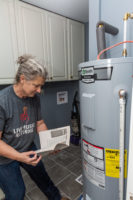
A.O. Smith, a leading water heater manufacturer, has donated 200 water heaters for Waverly, Tenn. flood relief efforts. The units will be provided to flood victims who are still rebuilding eight months after storms ripped through the town on Aug. 21, 2021. “At A. O. Smith, we are deeply committed to supporting our local communities,” Read more
A.O. Smith, a leading water heater manufacturer, has donated 200 water heaters for Waverly, Tenn. flood relief efforts. The units will be provided to flood victims who are still rebuilding eight months after storms ripped through the town on Aug. 21, 2021.
“At A. O. Smith, we are deeply committed to supporting our local communities,” said David Chisolm, vice president of marketing and customer experience. “Hot water is such a basic life necessity. We hope the donation of these units will allow this community to rebuild more quickly while lessening the financial burden. We also hope that this will inspire other companies to step forward with additional donations to assist in rebuilding the Waverly community.”

In August 2021, treacherous storms swept through the Waverly community claiming 20 lives, including several children. Hundreds of homes were damaged, and some residents have even had to purchase trailers and RVs to live in while their homes are being repaired. Of the homes that were destroyed or severely damaged, 80% of them are owned by people ages 70 or older, and most of those homeowners are living on social security wages.
“The past eight months since the flood have been incredibly difficult, but Waverly is a resilient town,” said Waverly resident, Susan Hodges. “When our family began rebuilding, we had no idea how long the process would take or just how expensive it would be. We’re grateful for the money we’ve saved by not having to purchase a water heater, but the impact of A. O. Smith’s donation goes beyond that—it’s a huge step toward making our home livable once again, and it’s raised our spirits along the way.”
FEMA helped support the community at the beginning of its redevelopment phase immediately after the flooding, but the extensive damage has continued to put pressure on homeowners. Community members have worked relentlessly to help their neighbors, friends and family in the area recover from the devastation. Hodges has two adult children living in Waverly whose houses were destroyed by the flood. She has spent the last eight months assisting them in their complete home renovations.
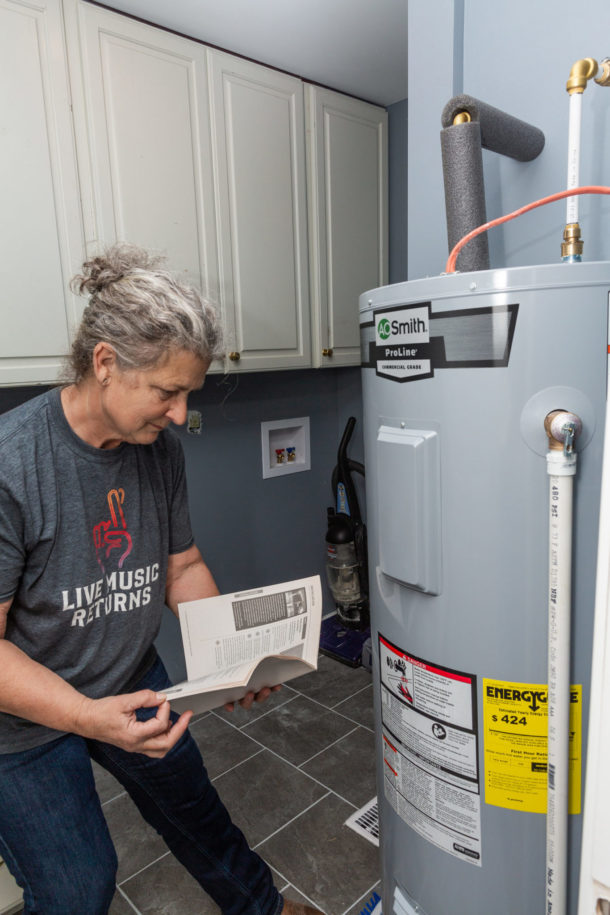
“The Waverly community has worked tirelessly to help neighbors and friends rebuild from this tragedy. We are so thankful for the water heater donation from A. O. Smith,” said Kaye Thomas of First Baptist Church Relief Efforts. “Water heaters are an essential item that many of our homeowners could not afford without the help from A. O. Smith. This donation truly gave the Waverly community a renewed sense of hope in what continues to be a long road to recovery. It will allow our community to continue to push forward in recovery efforts as we rebuild.”
The units were delivered to the First Baptist Church in Waverly earlier this year, and roughly 100 units have already been distributed to families in need. Distribution and installation will continue in the coming months.
